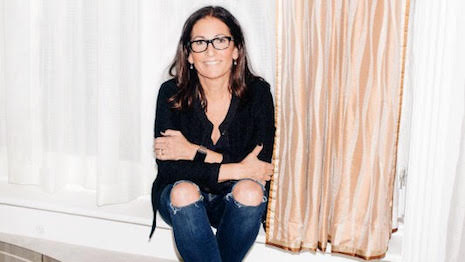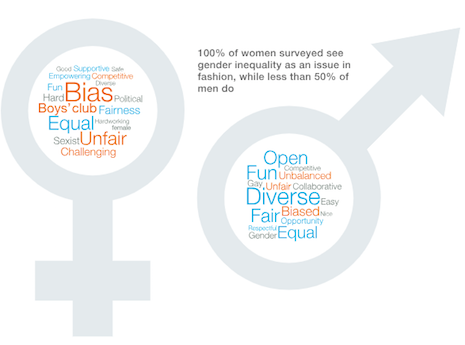
Carole Shashona is a jewelry designer
By Mickey Alam Khan
There is a discrepancy between genders on beliefs regarding equality in the fashion workplace, with 100 percent of women thinking this to be an issue, while less than half of men do.
Attributed to the fact that there are many women designers in the fashion and accessories world, many men believe that there is no issue with inequality in fashion. According to a report from McKinsey, Glamour and the CFDA, women start careers in fashion with higher expectations than men.
Fashion and inequality
Seventy percent of women in entry-level positions look to be top executives in their careers, while only 60 percent of men have the same aspirations.
However, while women start their careers with high hopes, men's ambitions continue to grow while the percentage of women looking to be an executive remains largely the same. The 60 percent of men who aim to be top executives jumps to 91 percent, while the portion of women eying executive roles grows to 73 percent.
 Beauty mogul Bobbi Brown is among the "Fearless Women" featured in Saks' talks. Image courtesy of Saks Fifth Avenue
Beauty mogul Bobbi Brown is among the "Fearless Women" featured in Saks' talks. Image courtesy of Saks Fifth Avenue
In terms of phrases and words used to describe the fashion industry as it relates to gender, men note "open," "fun," "diverse," "fair," "equal," "unbalanced," "unfair" and "biased."
"Bias" is the top word women designated, followed by "equal," "unfair," "boy's club," "challenging" and "fairness."
 Word cloud on how men and women feel in regards to inequality. Image credit: McKinsey & Company
Word cloud on how men and women feel in regards to inequality. Image credit: McKinsey & Company
There is likely a significant lack of action in the industry, as 80 percent of the participants in the survey could not describe a solid example of a plan to address gender inequality.
Inequality initiatives
While most companies have a gender diversity program of some sort in place, far fewer women feel that those programs are having a genuine effect on how they advance through a company.
Speaking at the Women in Luxury 2017 conference, a principal from Boston Consulting Group laid out some of the ways that companies can support their own women employees and not just their women customers. Advancement and retention, it turns out, are far more important for this than simply hiring more women (
see story).
The world of luxury executives is still overwhelmingly made up of men, but some of the top women in luxury believe that there are paths forward for women and much notable progress has been made.
Speaking at the Women in Luxury 2018 conference on May 9, a panel of top women executives in luxury spoke about the challenges they have faced, how they overcame them and how the pathways to the C-suite have changed for women over the years.
In the Fortune 500, there are more CEOs named John than there are women CEOs. Meanwhile, women represent around 50 percent of the United States while only 3 percent of the population is named John.
But things are changing and women are increasingly taking up leadership roles in their respective companies (
see story).
 Carole Shashona is a jewelry designer
Carole Shashona is a jewelry designer
 Beauty mogul Bobbi Brown is among the "Fearless Women" featured in Saks' talks. Image courtesy of Saks Fifth Avenue
Beauty mogul Bobbi Brown is among the "Fearless Women" featured in Saks' talks. Image courtesy of Saks Fifth Avenue Word cloud on how men and women feel in regards to inequality. Image credit: McKinsey & Company
Word cloud on how men and women feel in regards to inequality. Image credit: McKinsey & Company